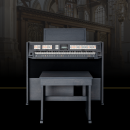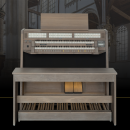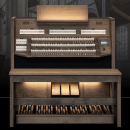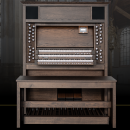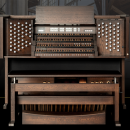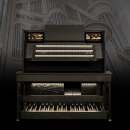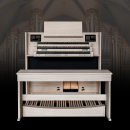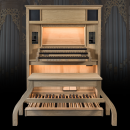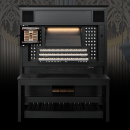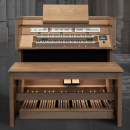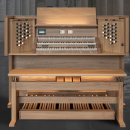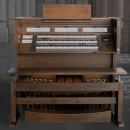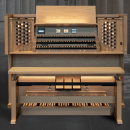Caen St.Etienne
Since its foundation by William the Conqueror in 1066 (who was buried in the presbytery of the church) the "Abbaye aux Hommes" was the center of the education for the whole region and center of the musical life. It is very likely that since the very beginnings, the ceremonies were accompanied by organ. The chronicles mention the organ for the first time in the 14th century, however this instrument was destroyed by the Hugenots (1562) and not until 200 years later was it replaced. The builders of the new instrument were brothers Lefevre from Rouen. They enjoyed a similar reputation as their contemporaries Cliquot, Isnard or Moucherel. Master carpenter Gouy from Rouen built a monumental oak organ casework adorned by two Herculean statues, which support the pedal towers.
Hard times for the organ
The consecrating ceremony was on February 10, 1745. The organ had over 4000 pipes, 60 registers, 5 keyboards (three of them with 53 tones) and for that time unusual pedal board comprising 30 keys and 13 registers (including double trompette and clarion). The instrument survived without much harm during the revolutionary rampages. Just like with the organ in St. Maximin, playing Marseillaise at the right time was helpful in saving the organ. However, by the mid 19th century, the organ was practically unplayable due to its poor maintenance, its sheer size and mechanical complexity. Even a comprehensive reconstruction by Verschneider (1859-1863) did not help to change the sad situation. This led to the decision to obtain a new organ utilizing the perfectly preserved Gouy's casework still valued at 60 000 francs.

Caen St.Etienne
Specifications
General
- Cavaille-Coll, 1885
- 3 manuals
- 55 stops
